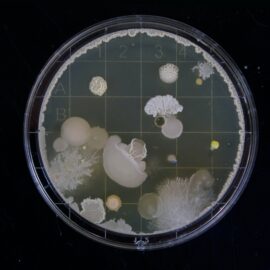

This article is an excerpt from the Shortform book guide to "Antifragile" by Nassim Nicholas Taleb. Shortform has the world's best summaries and analyses of books you should be reading.
Like this article? Sign up for a free trial here .
What are high-level Antifragile examples? How do frequency and intensity of stress affect antifragility?
One of the most interesting Antifragile examples is that of antibiotics. While antibiotics should, in theory, wipe out a bacteria population entirely, what actually happens is that some survive and get stronger.
Read more about this Antifragile example below.
Frequency and Intensity of Stress Impacts Antifragility
In spite of its great potential, antifragility naturally has limits. Something that takes damage too quickly, or too frequently, won’t be able to repair itself. For example, a boxer who takes some hits will toughen up to withstand those kinds of hits in the future—however, someone who gets shot through the heart will die almost immediately, with no chance to heal or grow from the damage.
Similarly, for evolution—that is, higher-level antifragility—to function, some of the species must survive the damage. For that to happen, there must be diversity within the species. If a single stressor wipes out the entire population (of organisms, businesses, or whatever), then there’s no way for that population to evolve; some members of that population have to be resistant to that stressor in order for the population to strengthen itself.
Here’s one of the most interesting Antifragile examples. Consider the phenomenon of antibiotic resistance: A complete round of antibiotics should wipe out the bacteria population totally (or close enough that the immune system can clean up what’s left). However, an incomplete round of treatment can actually make the infection harder to cure, as the bacteria with some degree of antibiotic resistance would be the ones to survive and reproduce. This is the ideal situation—for the bacteria, not for the diseased organism, of course.
The ideal form of stress is short-lived and followed by plenty of time to recover. This allows the system to respond to the new information and compensate, or overcompensate, for the stress. If the organism has no chance to recover, or the population is wiped out entirely, then antifragility fails.
Of course, even if an entire population does disappear, there is yet another level of antifragility that we could consider: the world as a whole. If a species goes extinct, or a certain type of business is no longer needed (for example, now that we have alarm clocks there’s no need for someone to go around tapping people’s windows in the morning), the world benefits from the loss of this unfit “species.” In the case of the window-tappers, the benefit is that people no longer need to pay for that service.

———End of Preview———
Like what you just read? Read the rest of the world's best book summary and analysis of Nassim Nicholas Taleb's "Antifragile" at Shortform .
Here's what you'll find in our full Antifragile summary :
- How to be helped by unforeseen events rather than harmed by them
- Why you shouldn't get too comfortable or you'll miss out on the chance to become stronger
- Why you should keep as many options available to you as possible






